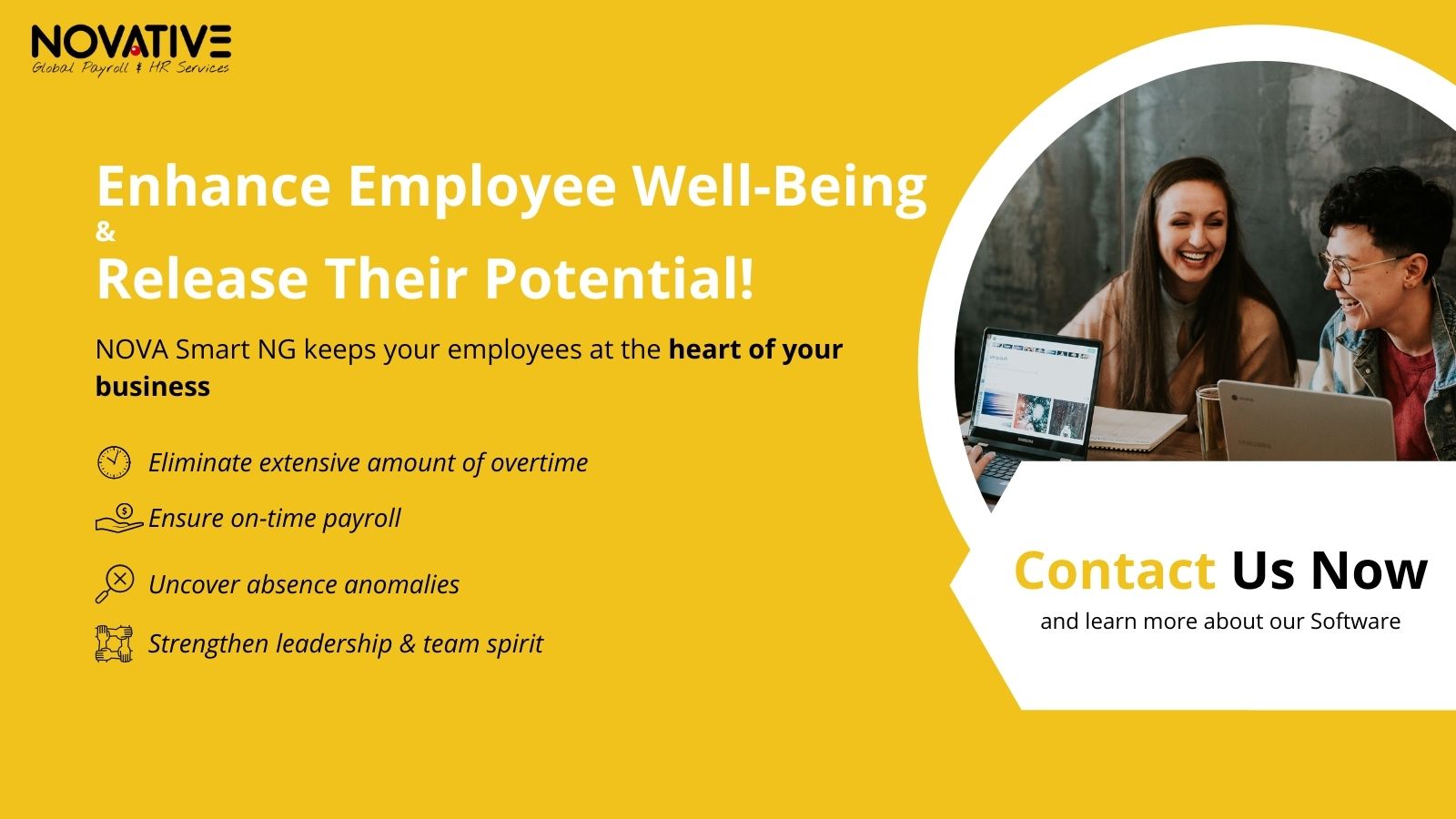Protecting employee’s health and wellbeing at work is more important than ever after suffering a draining and lengthy pandemic. Boundaries between work and private life have slowly deteriorated and become one whole blurry picture. This is a threat to the mental health of your employees.
Still, in many companies, protecting workers mental health, is still low on their agenda. The health of the company culture has a direct impact on presenteeism, absenteeism & also leaveism.
In this article, we look at the impact of neglecting the importance of employee wellbeing on attendance and absence to identify strategies that address the resulting constraints.
👉 Check out our page dedicated to well-being and how software can enhance your efforts. Find additional insightful articles to expand your knowledge.
Presenteeism & Leavism: A Result of Neglected Employee Wellbeing?
Even though employers believed that the implementation of well-being initiatives results in better employee morale, inclusive cultures and lower sickness absence, companies are still struggling to hear the voices of their employees. While many big corporations included more mental health measures as a result of COVID-19, many others did not. Employers still place too little priority on implementing well-being practices. As a result, staff have developed unhealthy ways of keeping up with the pressure. Actually, being absent is the last resort for many.
Absenteeism
Absenteeism usually describes an unplanned employee absence due to sickness, stress, or other causes that keep employees from working. Stress mainly caused by workload, seems to be on the rise while already being one of the TOP 3 causes why employees stay absent from work.
Presenteeism
Presenteeism describes employees that, despite them being sick, come to work. A study in 2018 indicates that a staggering number of 86% of employees say they have noticed presenteeism in their company. Despite researchers indicating that productivity and efficiency of a sick employee at work is reduced by one-third or more, some companies still think that a sick employee at work is better than no employee for a week. However, this practice can actually do more harm than good. Employees can infect other employees, leading to even more lost productivity. They can even increase the number of days they are unable to perform at their full capacity.
Leaveism
Leaveism describes employees taking allocated time off to work, make extra hours or check-in at work when on holiday. This is a common practice that has established over the years. Over 69% of a recent study indicated that respondents have experienced leaveism happening in their company and employees making extra hours to meet deadlines.
Strategies for Better Well-Being & Higher Employee Effectiveness
To combat employee absence or other currently used unhealthy working routines, the company and managers must implement measures that foster well-being. Managers must put the employee at the center of their doing. Here are only some of many strategies that you as an employer can implement to release the full potential of your employees.
⚪️ Understand the underlying pattern
Without collecting absence data and tracking absences, you run into the risk of not retaining your employees. This may be caused by negligence of warning signals that indicate mental or physical draining, reducing overall employee performance. Implement a Software that offers you insights and allows you to proactively act before it is too late. Do not only collect data but use it to identify causes for absences, stress or presenteeism.
⚪️ Put in place a well-being strategy
Putting a well-being strategy in place sets the tone right by showing that employees are recognized for their work and their value that they bring to your company. It allows you to set objectives and targets that can be tested for their effectiveness. Adjust them if the expected results have taken place or far from being reached.
⚪️ Provide different leave categories
Allow your employees to not only take leave for holidays but also for other circumstances, such as family circumstances, moving or childcare. This encourages a healthy working environment where employees are felt seen. An absence software here can help you in establishing categories and easily track them.
⚪️ Train your managers
Direct managers of employees know most about their employees. They usually see them day-to-day and may pick up on certain behavior that does not foster mental or physical health. Therefore, line managers or heads of departments must be trained to pick up presenteeism, leavism or other contraproductive behavior that harms the employee and the department in performing their best. They must immediately act and foster a culture where well-being is put first. This will automatically benefit the whole company and results in higher productivity and employee satisfaction.
⚪️ Understand workloads to minimize stress
Heavy workloads have been found to be the number 1 cause for stress-related absences. You must recognize when employees’ to-do list is not manageable and offer individual relief to them. Step in, show your employee that they are valued, and find solutions that support the employee in bringing the best results possible without sacrificing their well-being. An employee cannot perform on an empty and overworked cup. Having the employee under an immense pressure will most definitely not lead to the desired results.
⚪️ Update the company’s attendance strategy
Companies must check whether their attendance strategy are still up-to the current work era. Employees and Generation Z and Y are more and more looking for flexibility in their working hours. Not meeting their needs will either lead to unhappy, absent & less efficient employees or to hardships when it comes to retaining such generations within the company.
⚪️ Analysis of your company culture
Company culture play a big part in whether employees feel like they need to work on holiday or come in sick. Work on strengthening a positive work culture that has strong rules and structures in place. Make employees comfortable enough to take their well-deserved holiday for actual relaxation, instead of using it to keep up with their workload. Otherwise, this misses the point and creates a deathly cycle of overworked employees, stress & dissatisfaction that slowly rubs off on the company’s success.
Taking care of your employees does not need to be much of an expense. Showing empathy & step in if mental or physical health are threatened are much more valuable. Show them that your company puts employees first, and you will soon see that absence and performance levels change for the better.











This is very attention-grabbing, You are a very skilled blogger. I’ve joined your rss feed and look ahead to seeking extra of your magnificent post. Additionally, I have shared your website in my social networks!
Took me time to read all the comments, but I genuinely enjoyed the article. It proved to become Extremely useful to me and Im certain to all the commenters here Its always good when you can not only be informed, but also entertained Im sure you had fun writing this post.